Understanding the Foundations of Emotional Development
Emotional literacy, a cornerstone of emotional intelligence, encompasses a child's ability to recognize, understand, label, express, and regulate emotions. It serves as the groundwork for healthy social interactions, academic achievement, and overall well-being. Cultivating these skills during early childhood is essential for fostering empathy, resilience, and self-control, which are vital for navigating life's challenges and building meaningful relationships.
Defining Emotional Literacy and Its Importance
What is emotional literacy and why is it important for child development?
Emotional literacy, also known as emotional intelligence, is a child's ability to recognize, understand, label, express, and control their feelings. This essential skill forms the basis for healthy social, emotional, and cognitive growth. When children develop emotional literacy, they can better identify their own emotions and empathize with others, which helps in building strong relationships.
Core components of emotional intelligence include self-awareness, which is understanding one's own emotions; empathy, the ability to see and feel from another's perspective; and social skills that facilitate positive interactions. These elements work together to support children in navigating their emotional landscape, resolving conflicts, and developing resilience.
Supporting emotional literacy through various activities significantly benefits children. These include simply naming feelings during daily interactions, reading stories that explore emotions, and modeling appropriate emotional responses as adults. Mindfulness exercises and calming strategies also help children regulate their feelings, reducing stress and behavioral challenges.
Research shows that children who grow in emotional literacy tend to excel academically, get along better with peers and teachers, and demonstrate improved mental health. They are more adept at coping with setbacks and more likely to develop a positive outlook on life.
Incorporating emotional learning in early childhood settings creates a nurturing environment where children feel understood and validated. This foundation fosters their ability to manage emotions constructively, contributing to lifelong emotional competence, better social interactions, and overall well-being.
Why Prioritize Teaching Emotional Literacy
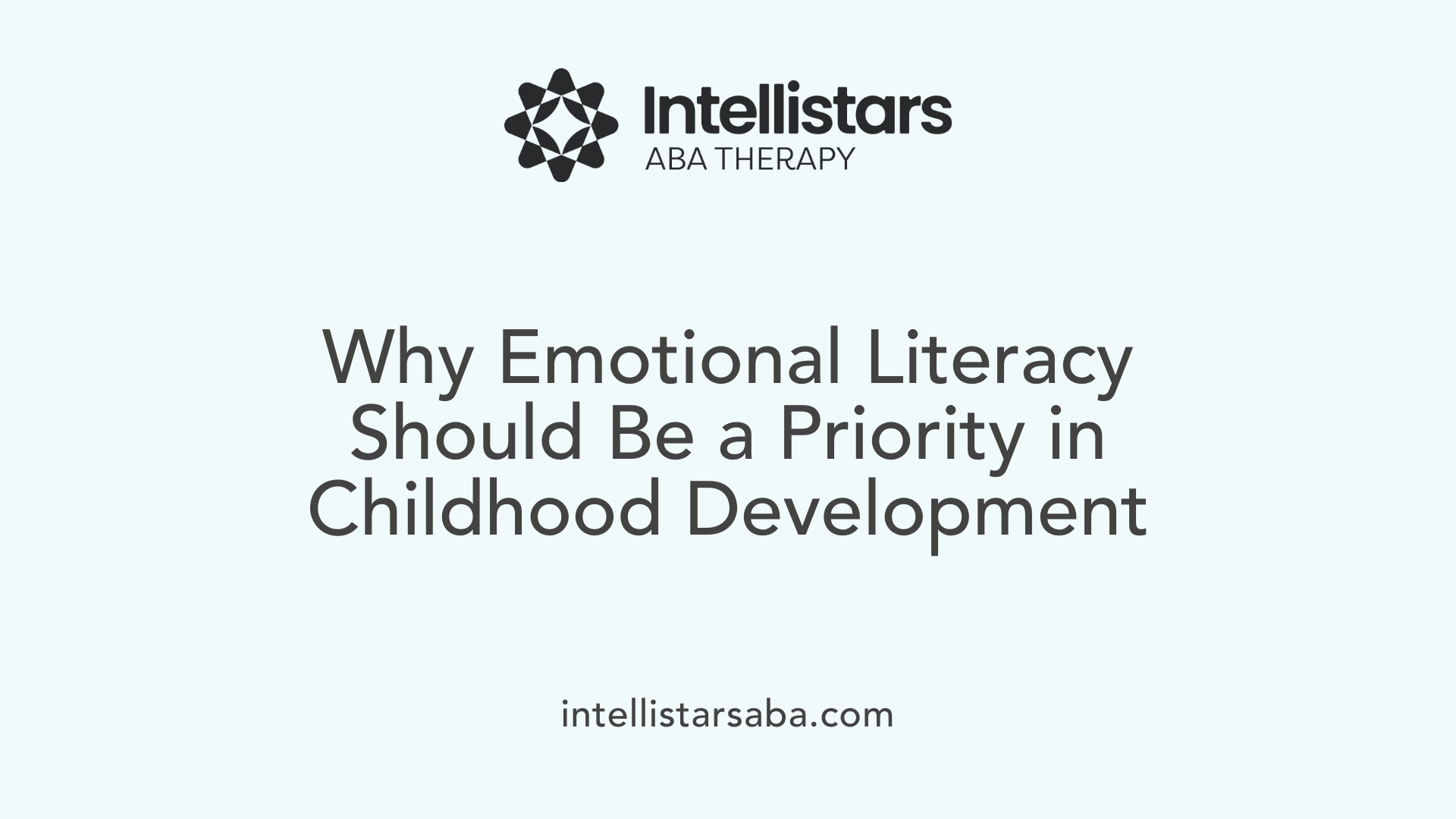
Why should we prioritize teaching emotional literacy to children?
Teaching emotional literacy is vital for shaping well-rounded, emotionally healthy individuals. It involves helping children identify, understand, and express their feelings effectively, which lays a foundation for their overall development.
Children with strong emotional literacy skills are better equipped to navigate their own emotions, handle stress, and develop resilience. These abilities lead to improved mental health, as they foster positive coping strategies and reduce anxiety and behavioral issues.
Furthermore, emotional competence significantly influences a child's academic success. When children can regulate their feelings, they stay focused, participate actively, and are more likely to excel academically. Teachers report that children with better emotion management tend to be more engaged, cooperative, and productive in the classroom.
Socially, emotional literacy builds empathy, helping children understand and relate to others better. This understanding encourages positive interactions, reduces conflicts, and supports social inclusion. As children learn to respect others’ feelings, they develop friendships and participate more fully in their communities.
Implementing systematic teaching strategies into the curriculum ensures that emotional skills are developed consistently and intentionally. Approaches like the RULER method, Mood Meter tools, and emotion-based activities such as arts and storytelling help embed emotional learning into daily routines.
Overall, prioritizing emotional literacy prepares children not just for academic achievement, but for lifelong success as empathetic, resilient, and emotionally intelligent individuals.
Practical Strategies and Activities for Developing Emotional Literacy
What are some practical activities and strategies to support emotional literacy development in children?
Supporting emotional literacy in children can be both effective and engaging through a variety of fun activities. These activities not only help children recognize and label their feelings but also encourage them to understand others' emotions and develop regulation skills.
One popular approach is storytelling. Reading books that highlight emotions allows children to connect with different feelings and scenarios. Following the story, children can be invited to share their thoughts or draw pictures that express the characters' emotions.
Role-playing is another powerful activity. By acting out social situations, children learn to identify emotions and practice appropriate responses. This method enhances empathy as children imagine themselves in others’ shoes.
Emotion matching games often involve cards or images showing different facial expressions or body language. Children match facial expressions with emotion words, improving their emotional vocabulary.
Feeling face collages are creative tools where children cut out or draw faces showing various emotions. These collages serve as visual aids to discuss feelings and their intensities.
Music and songs about emotions also support emotional literacy. Singing about feelings helps children internalize emotion words and recognize tone and mood cues.
Incorporating tools like emotional cards, feeling charts, and frameworks such as Plutchik’s Wheel of Emotions or the RULER approach can deepen understanding. These resources organize emotions by intensity and related feelings, making abstract concepts more accessible.
Both teachers and parents play crucial roles by modeling healthy emotional expression. During interactions, they can label feelings, share their own experiences, and create a safe space for children to express themselves.
Regular emotion check-ins and reflective exercises foster ongoing awareness. Mindfulness practices like deep breathing, along with perspective-taking activities, help children regulate emotions and develop empathy.
In summary, combining modeling, engaging activities, and open conversations creates a nurturing environment that promotes emotional awareness, enhances vocabulary, and develops regulation skills essential for children’s social and emotional growth.
The Role of Language and Social-Emotional Learning (SEL) in Development
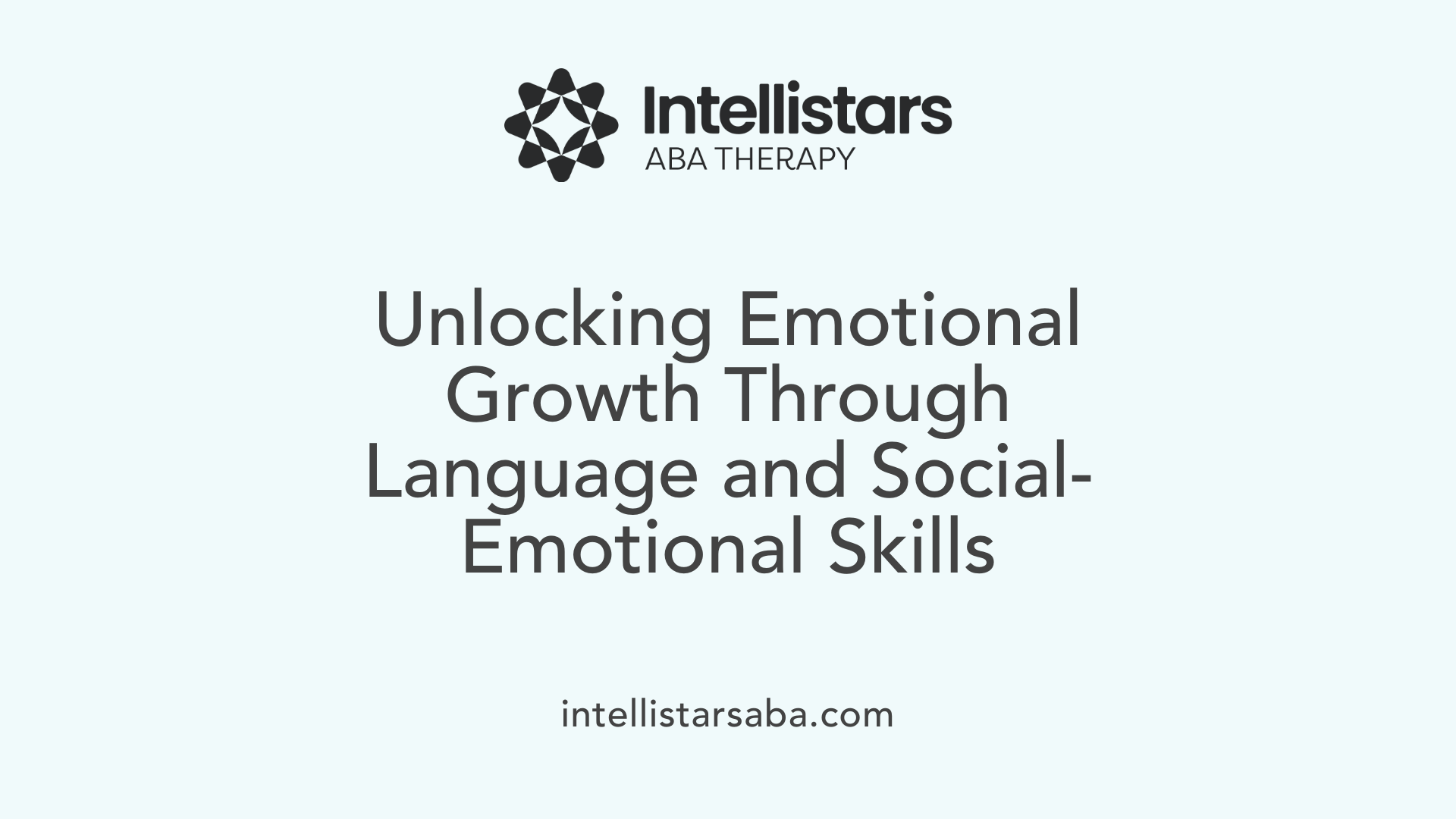
How does social-emotional learning, including emotion language, benefit child development?
Social-emotional learning (SEL) plays a vital role in shaping a child's overall development. A crucial part of SEL involves exposure to emotion and mental state language, which helps children recognize and label their feelings and those of others. This vocabulary development enables children to better understand their emotional experiences and communicate more effectively.
Research shows that children who are introduced to rich emotion language tend to develop stronger emotional regulation skills and greater empathy. These skills contribute to improved social interactions, fewer behavioral issues, and greater academic achievement. When children can articulate emotions like frustration, joy, or sadness, they can manage their responses more appropriately, leading to a more positive classroom climate.
A supportive environment filled with opportunities to practice emotional language during activities such as story reading, play, and daily routines enhances these skills. For example, reading picture books that highlight feelings or engaging children in discussions about characters' emotions foster their understanding and empathy.
Parent and caregiver talk about emotions regularly, which nurtures emotional growth beyond the classroom. This language-rich environment helps children develop an emotional vocabulary that boosts their ability to regulate behaviors and build meaningful relationships.
Furthermore, SEL programs incorporating emotion language and expressive activities foster resilience and social competence. These foundational skills benefit children across all areas of development, equipping them to navigate complex social situations, handle setbacks, and engage in lifelong learning.
Ultimately, integrating emotion language and SEL into early childhood environments supports children’s emotional well-being, academic success, and positive social engagement, paving the way for healthier adult relationships and community participation.
Guiding Principles for Teaching Emotional Literacy
What are practical steps for teaching emotional literacy?
Teaching emotional literacy can be made effective through simple, intentional strategies that help children understand and express their feelings. A foundational step is stopping for a moment to tune into the child’s emotional state. This means paying close attention to their cues and reactions.
Making eye contact is another important step. It helps establish a connection and signals to the child that their feelings are acknowledged and valued. During these moments, adults can focus on feelings by verbalizing their own emotions, such as saying, "I feel happy" or "I'm a bit frustrated." This models emotional language and provides a vocabulary for children to use.
Labeling the child's emotions is crucial. When a child is upset, an adult might say, "It looks like you're angry because your toy broke," helping the child connect the emotion to a specific situation.
Encouraging children to articulate their feelings is a key activity. Open-ended questions like, "Can you tell me what you're feeling right now?" invite children to express themselves, fostering emotional awareness.
Creating a safe, open environment is fundamental. When children feel secure, they are more willing to share feelings and engage in emotional learning.
Activities such as emotional check-ins, where children identify their feelings at the start of the day, or storytelling that focuses on characters' emotions, build understanding. Visual aids like feeling faces or emotion cards further support recognition and expression.
Incorporating calming strategies such as mindful breathing exercises helps children regulate intense emotions. Perspective-taking activities, where children imagine how others might feel, deepen empathy.
By systematically applying these steps, adults guide children toward a more nuanced understanding of their emotional world. This not only enhances self-awareness but also improves social skills, laying the groundwork for healthier relationships and better emotional resilience.
Scientific Evidence Supporting the Value of Emotional Literacy
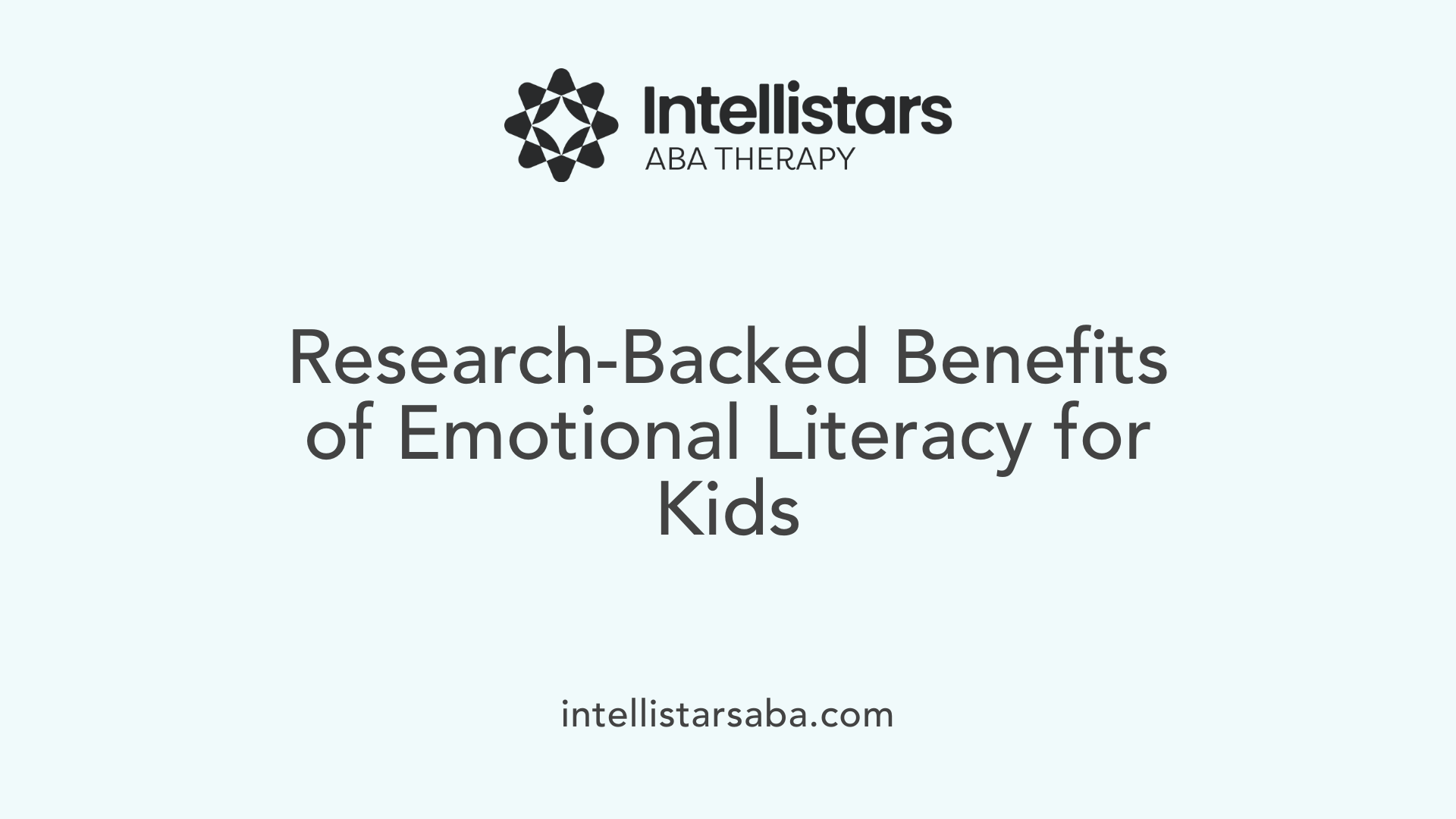
What scientific evidence supports the significance of teaching emotional literacy?
Research consistently shows that teaching emotional literacy has a profound impact on children's development. Studies indicate that children who learn to recognize, understand, and manage their emotions tend to perform better academically. For instance, social and emotional learning (SEL) programs are linked to higher grades, improved classroom behavior, and fewer behavioral problems.
Neuroscience provides further support, demonstrating that emotional states influence how the brain processes information. When children develop emotional literacy, they can better regulate their feelings, which in turn enhances their ability to focus, remember, and solve problems. This connection contributes to improved learning outcomes.
Empirical evidence also highlights the broader benefits of emotional literacy. Schools implementing SEL initiatives report reduced instances of bullying, increased feelings of safety, and greater student engagement. These positive environments support long-term success, including higher graduation rates and better employment prospects.
Moreover, emotional literacy benefits teachers as well. Educators trained in SEL strategies experience less burnout and find classroom management easier. Cost-benefit analyses show that investing in social and emotional learning yields a substantial return, considering the improvements in student achievement and mental health.
Overall, rigorous research confirms that fostering emotional literacy is crucial not only for individual growth but also for creating healthier, more productive school environments. Its importance extends across diverse populations, emphasizing its role as a fundamental component of education that nurtures resilient, well-adjusted, and capable learners.
Long-term Benefits and Lifelong Impact of Emotional Literacy
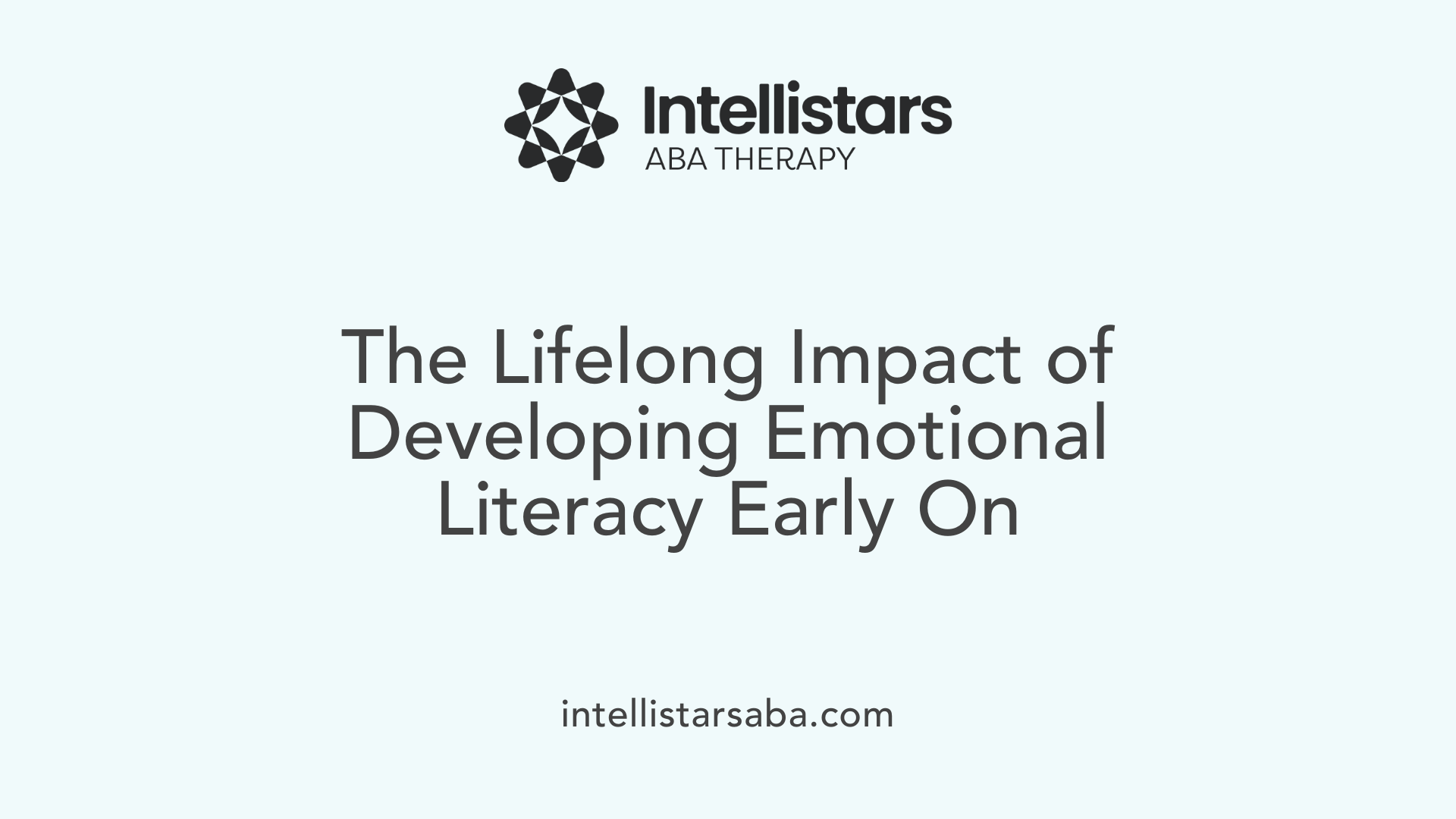
How early emotional skills influence later outcomes
Developing emotional literacy at a young age plays a crucial role in shaping a child's future. When children learn to recognize and understand their own feelings, they build a foundation for resilience and self-awareness. These skills equip them to handle setbacks and stressful situations more effectively.
Empathy, another vital component of emotional intelligence, enables children to connect with others on a deeper level. This fosters healthier relationships, whether in friendships, family, or future workplaces.
Research consistently shows that children who develop these emotional competencies tend to perform better academically, have fewer behavioral problems, and enjoy more positive social interactions. Their ability to regulate emotions helps them stay focused, manage conflicts, and engage proactively with challenges.
Furthermore, these early emotional skills contribute to long-term advantages in various life areas, including career success, mental health, and personal well-being. Teaching children to be emotionally literate not only supports their immediate social and academic growth but also lays the groundwork for a resilient, empathetic, and self-aware adult life.
Cultural and Contextual Influences on Emotional Socialization
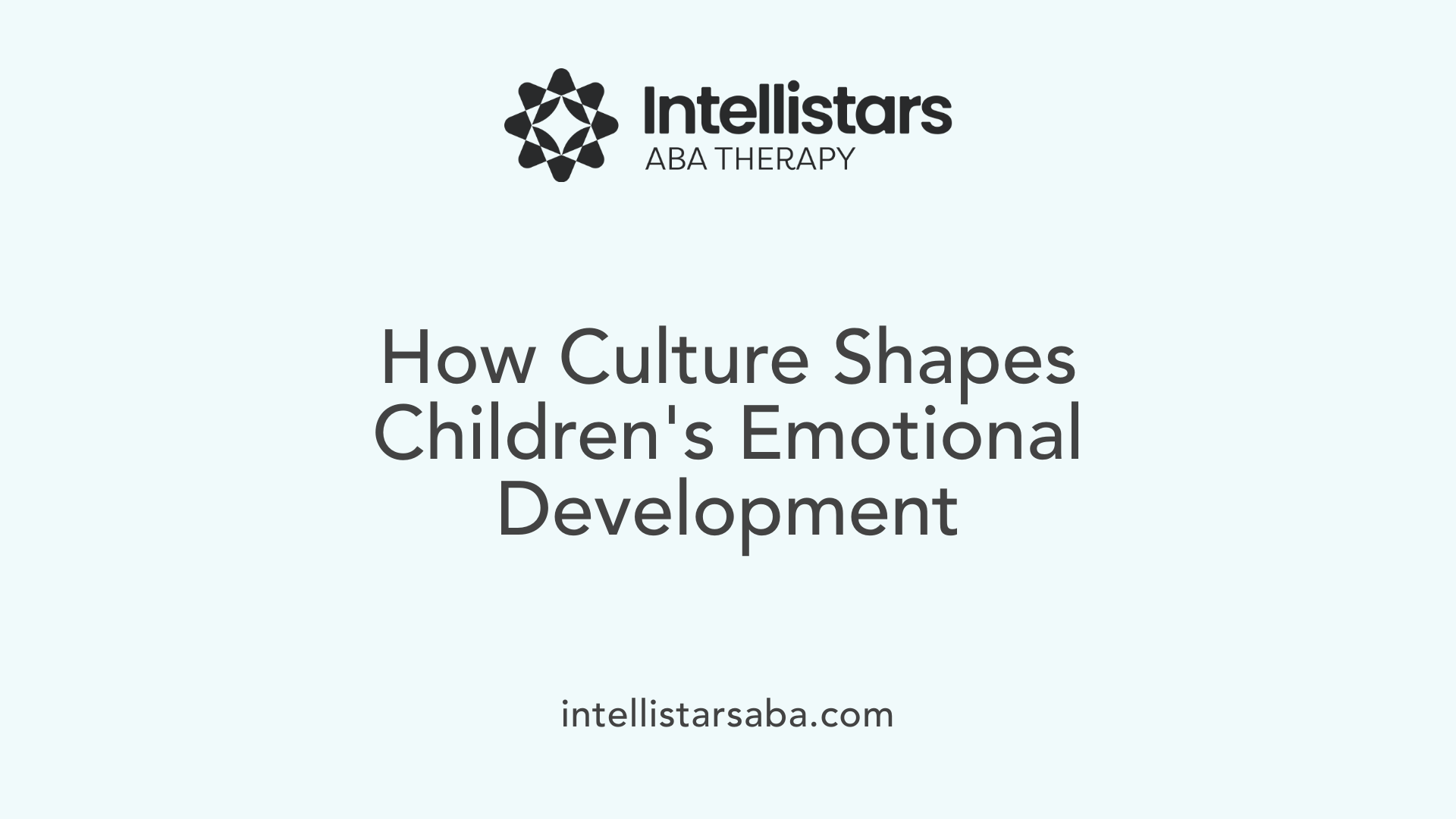
How do cultural values and socioeconomic factors shape children’s emotional development?
Children’s emotional socialization is deeply influenced by the cultural and social environment in which they grow up. Cultural values determine how emotions are expressed and what is considered appropriate or acceptable. For instance, some cultures encourage open expression of feelings, while others promote restraint and emotional control.
Socioeconomic status also plays a significant role. Families with fewer resources may experience higher stress levels, which can affect how they socialize emotions in children. Conversely, more affluent environments might offer more opportunities for emotional learning through diverse activities and resources.
Parents and caregivers act as primary role models, demonstrating emotion regulation and social skills. Their responses to children’s feelings, including validation and guidance, help children learn to manage their emotions effectively.
How do emotional socialization practices vary across cultures?
Across different societies, emotional socialization practices differ greatly. For example, Western cultures often emphasize individual expression and self-awareness, encouraging children to verbalize their feelings. In contrast, many East Asian cultures value group harmony and may promote emotional restraint to maintain social balance.
These cultural differences influence not only what emotions children learn to express but also how they interpret others’ emotions. Understanding these variations helps educators and caregivers support children’s social-emotional development effectively, respecting cultural norms while promoting healthy emotional skills.
Below is a comparison table highlighting different cultural approaches:
| Aspect | Western Cultures | East Asian Cultures | Implications for Children |
|---|---|---|---|
| Expression of Emotions | Encouraged and verbalized | Often restrained and context-dependent | Varies in comfort with explicit emotional sharing |
| Social Harmony | Focus on individual needs | Emphasis on group harmony | May influence emotional regulation and expression |
| Parental Guidance | Promote emotional independence | Foster emotional control for social cohesion | Shapes children’s comfort in expressing and managing feelings |
| Cultural Norms | Open emotional language | Restraint and subtlety | Affects children’s ability to articulate feelings and foster empathy |
Understanding these cultural and social influences provides a more comprehensive view of emotional development and supports culturally responsive approaches to teaching and caregiving.
Fostering a Future of Emotional Competence and Well-being
Supporting the development of emotional literacy from early childhood is not only a fundamental aspect of education but also a crucial investment in children's future success and well-being. Through intentional teaching, modeling, and engaging activities, caregivers and educators can empower children to understand, regulate, and empathize with others. Developing these skills early on fosters resilience, promotes healthier relationships, and lays a foundation for lifelong emotional competence, enabling children to navigate the complexities of an increasingly interconnected world with confidence and compassion.
References
- Benefits of Emotional Literacy in Early Childhood Education
- The Role of Emotion Regulation and Children's Early ...
- Children and empathy: Teaching emotional literacy
- Teaching Emotional Intelligence in Early Childhood
- The Importance of Teaching Emotional Literacy in Schools
- Fostering Emotional Literacy in Young Children: Labeling ...
- Learning through language: The importance of emotion ...
- Why 'Social and Emotional Learning' Is So Important for ...






